
I. Introduction:
The tourism industry in India holds immense significance and a bright future. With its rich cultural heritage, stunning natural landscapes, and diverse offerings, India has become a global tourism hub.
“India’s rich cultural heritage and diverse offerings make it a compelling destination for travelers worldwide,” says Dr. Sarah Williams, a renowned travel expert.
The industry not only contributes to the economy but also creates job opportunities. This article explores the growth potential of the tourism industry in India in 2014. The tourism industry in India has shown remarkable resilience and growth.
India’s natural beauty and biodiversity add to its tourism potential. The country’s conservation efforts make it an appealing destination for sustainable and responsible travel. The government has taken proactive measures to support and promote sustainable tourism.
It is interesting to have a glance over the following statistics:
Year GDP : 2022 2025 2030
Contribution:(USD Billion) 150 250 350
Job (Millions): 7.5 10 15
Intern. Tourist Arrivals: 15 20 25
(Millions)
By taking advantage of the potential of India’s tourism industry, the country can position itself as a preferred global destination. It can offer unique experiences to travelers while embracing sustainability and responsible practices, enhancing its global appeal.
II. Rich Cultural and Historical Heritage in Indian Tourism
India’s cultural and historical heritage is a mosaic woven with diversity, traditions, and architectural marvels that have captivated people from across the globe.
This rich heritage forms a solid foundation for the development of heritage tourism, offering unique experiences and contributing significantly to the country’s economy.
1. Diversity of Cultures:

India is often referred to as a “melting pot” of various cultures, languages, and traditions.
With a history of thousands of years, the country has witnessed the rise and fall of numerous civilizations, each leaving behind a distinct imprint on its cultural fabric.
From the colorful festivals of India to the spiritual practices of Varanasi, from the serene backwaters of Kerala to the vibrant streets of Mumbai, India’s cultural diversity is truly unparalleled.
2. Architectural Marvels:
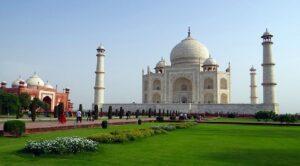
One cannot discuss India’s cultural heritage without mentioning its magnificent architectural marvels.
The Taj Mahal, a UNESCO World Heritage Site and one of the Seven Wonders of the World, stands as a testament to love and craftsmanship.
This iconic white marble monument attracts millions of visitors each year, offering a glimpse into the grandeur of Mughal architecture.
Ancient temples across India, such as the temples of Khajuraho, Hampi, and Konark, showcase remarkable architectural skills and intricate carvings that depict mythological tales. These temples are not only places of worship but also architectural wonders that offer insights into India’s rich past.
3. Forts and Palaces:
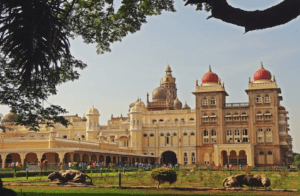
India’s forts and palaces narrate stories of valor, royalty, and grandeur.
The Amber Fort in Jaipur, the Red Fort in Delhi, and the Mysore Palace in Karnataka are just a few examples of splendid structures that stand as testaments to India’s royal history.
These architectural gems not only attract tourists but also serve as venues for cultural events, showcasing traditional music, dance, and arts.
4. Potential for Heritage Tourism:

India’s cultural and historical heritage presents immense potential for heritage tourism.
Travelers from around the world are drawn to India to experience its vibrant festivals, explore ancient ruins, and immerse themselves in the country’s rich traditions.
Heritage tourism offers visitors a chance to dive into the past, understand the roots of Indian civilization, and appreciate the cultural diversity that defines the nation.
Heritage tourism has a significant economic impact on India. It creates employment opportunities, supports local businesses, and fosters economic growth in communities surrounding heritage sites.
The revenue generated from heritage tourism contributes to the preservation and restoration of historical monuments, ensuring their longevity for future generations.
Moreover, heritage tourism promotes cultural exchange and understanding. Visitors have the opportunity to interact with local communities, witness traditional practices, and gain insights into the values and beliefs that shape Indian society.
This exchange of ideas and experiences fosters mutual respect and appreciation among people from different cultures.
III. Natural Beauty and Biodiversity in Indian Tourism
Showcase India’s natural beauty, including landscapes, wildlife, and national parks.
Discuss popular destinations like Kerala’s backwaters, Himalayan mountains, and wildlife reserves.
Highlight the potential for nature-based tourism and conservation efforts.
5. The Backwaters of Kerala

One of India’s most iconic natural attractions is the picturesque network of backwaters in Kerala.
Comprising interconnected lakes, canals, and lagoons, the backwaters offer a tranquil and enchanting environment for travelers to immerse themselves in nature.
The serene houseboat cruises along the backwaters allow visitors to witness the lush green landscapes, observe local life along the banks, and enjoy the soothing melody of rippling waters.
This eco-friendly mode of travel promotes sustainable tourism practices while providing a unique and rejuvenating experience.
6. The Himalayan Mountains

The majestic Himalayan mountain range, spanning several states in northern India, is a testament to nature’s grandeur.
With towering peaks, pristine valleys, and diverse flora and fauna, the Himalayas attract adventure enthusiasts, trekkers, and nature lovers from around the world.
Destinations like Ladakh, Uttarakhand, and Himachal Pradesh offer breathtaking landscapes, including snow-capped mountains, glistening rivers, and ancient glaciers.
Visitors can engage in activities like trekking, mountaineering, river rafting, and wildlife spotting while experiencing the serenity and awe-inspiring beauty of the Himalayas.
7. National Parks and Wildlife Reserves

India boasts a remarkable array of national parks and wildlife reserves, harboring rich biodiversity and providing a haven for conservation efforts.
The renowned Jim Corbett National Park, Ranthambore National Park, Kaziranga Nastional Park, and Periyar Tiger Reserve are just a few examples of India’s remarkable conservation areas.
These protected areas offer visitors an opportunity to observe majestic creatures such as tigers, elephants, rhinoceroses, and a myriad of bird species in their natural habitats.
Guided safaris, nature walks, and bird-watching expeditions allow tourists to appreciate the importance of conservation and gain a deeper understanding of India’s wildlife heritage.
8. Coastal Marvels

India’s coastline spans thousands of kilometers, encompassing stunning beaches, coral reefs, and marine ecosystems.
Destinations like the Andaman and Nicobar Islands, Lakshadweep, and the Gulf of Mannar Biosphere Reserve are renowned for their pristine beaches, crystal-clear waters, and vibrant marine life.
Snorkeling, scuba diving, and underwater explorations enable visitors to witness the stunning coral reefs, swim alongside colorful fish, and encounter marine species like turtles and dolphins.
These coastal areas present opportunities for sustainable tourism practices and raise awareness about the importance of marine conservation.
9. Nature-Based Tourism and Conservation

India’s natural beauty serves as a foundation for nature-based tourism, which focuses on responsible travel practices, environmental conservation, and community engagement.
Sustainable initiatives such as eco-lodges, community-based tourism projects, and nature interpretation centers have emerged to promote conservation efforts while providing economic benefits to local communities.
These initiatives encourage visitors to appreciate and respect the natural environment, support conservation projects, and contribute to the overall well-being of local communities.
IV. Spiritual and Wellness Tourism in India
Spiritual and wellness tourism has gained immense popularity in India, attracting travelers seeking rejuvenation, self-discovery, and a deeper connection with their inner selves.
India, with its rich spiritual heritage, ancient practices, and diverse wellness traditions, offers a plethora of destinations that cater to the spiritual and wellness needs of visitors.
This article explores the popularity of spiritual and wellness tourism in India, highlighting destinations such as Rishikesh, Varanasi, and Ayurvedic retreats.
Additionally, it discusses the potential for growth in this sector and its contribution to the economy.
10. The Popularity of Spiritual and Wellness Tourism in India:
India has long been revered as the birthplace of spiritual and wellness traditions, drawing seekers from around the world. The country’s ancient philosophies, yoga, meditation, Ayurveda, and diverse spiritual practices continue to entice travelers in search of tranquility, healing, and self-discovery.
Spiritual and wellness tourism offers visitors an opportunity to explore their inner selves, find solace in sacred spaces, and learn from spiritual gurus and practitioners.
11. Rishikesh: The Yoga Capital of the World:
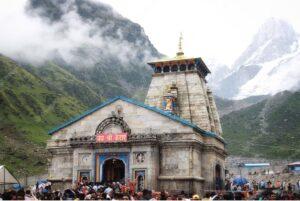
Rishikesh, India, is known as the world’s center for yoga and it’s hidden back in the Himalayan foothills.
This picturesque city along the holy Ganges River attracts spiritual seekers and yoga enthusiasts seeking enlightenment and physical well-being.
Rishikesh is home to numerous ashrams, yoga centers, and meditation retreats where visitors can learn various yoga disciplines, participate in meditation sessions, and engage in spiritual discourses.
The serene ambiance, surrounded by lush green forests and majestic mountains, enhances the spiritual experience of visitors.
12. Varanasi: The Spiritual Heart of India:
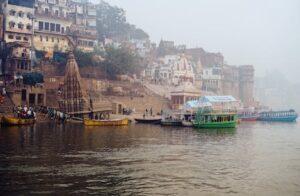
Varanasi, also known as Kashi, holds immense spiritual significance for Hindus.
Situated on the banks of the sacred Ganges River, this ancient city is believed to be one of the oldest inhabited places in the world.
A Memorable Journey to Varanasi: Jane Smith, a solo traveler from the UK, shares her transformative experience in Varanasi, where she witnessed the mesmerizing Ganga Aarti and found inner peace by the sacred river.
Varanasi offers a profound spiritual experience, where visitors can witness daily rituals, take part in sacred ceremonies, and immerse themselves in the spiritual energy that permeates the city.
The mesmerizing Ganga Aarti (worship ceremony) performed on the riverbanks is a captivating sight that attracts devotees and tourists alike.
13. Ayurvedic Retreats and Wellness Centers:
India’s wellness tourism extends beyond spirituality to embrace Ayurveda, a traditional system of medicine and holistic healing. Kerala, in particular, is renowned for its Ayurvedic retreats and wellness centers that offer rejuvenation and healing therapies.
Visitors can indulge in Ayurvedic massages, herbal treatments, detoxification programs, and yoga sessions, all aimed at restoring balance and promoting well-being.
These retreats often provide serene natural settings, such as lush forests or tranquil beaches, further enhancing the healing experience.
14. Growth Potential and Economic Contribution:
Spiritual and wellness tourism in India has witnessed significant growth in recent years, attracting both domestic and international tourists. The demand for wellness-focused experiences, including yoga retreats, meditation centers, and Ayurvedic treatments, continues to rise.
This sector contributes to the economy through job creation, infrastructure development, and revenue generation from tourism-related services and products.
The growth potential lies not only in catering to the needs of wellness travelers but also in promoting medical tourism, where visitors seek specialized treatments and therapies.
V. Adventure and Sports Tourism
Adventure and sports tourism in India offers enthusiasts a diverse range of thrilling activities set amidst breathtaking landscapes. From trekking in the Himalayas to river rafting in wild rapids and wildlife safaris in lush forests, India provides abundant opportunities for adrenaline junkies and nature lovers alike.
This article delves into the potential of adventure and sports tourism in India, highlighting popular activities such as trekking, river rafting, and wildlife safaris.
It also explores destinations that offer captivating experiences, including Ladakh, Goa, and the Andaman Islands.
15. Trekking: Scaling Heights and Exploring Scenic Trails
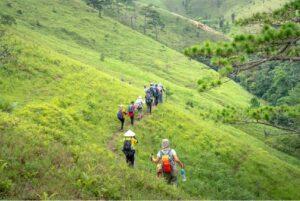
India’s vast and varied topography presents numerous trekking opportunities for adventure enthusiasts. The Himalayan region, particularly Ladakh, offers awe-inspiring treks amidst towering peaks and pristine landscapes.
The Markha Valley Trek and the Chadar Trek are renowned for their challenging terrains and breathtaking views.
The Western Ghats in South India also provide scenic trails, with treks like the Nilgiri Hills and the Western Ghats Monsoon Trek attracting nature lovers.
The trekking experiences in these regions offer a chance to connect with nature, witness panoramic vistas, and immerse oneself in the tranquility of the mountains.
16. River Rafting: Conquering Wild Rapids and Riding the Waves
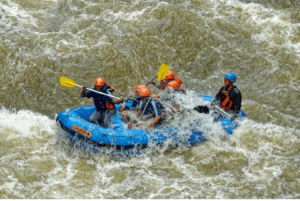
India’s diverse river systems offer thrilling river rafting experiences for adventure enthusiasts.
The Ganges in Rishikesh, Uttarakhand, is a popular destination for river rafting, offering a perfect blend of adventure and spirituality.
The rapids of the Ganges, such as the Brahmapuri, Shivpuri, and Marine Drive stretch, provide exciting challenges for rafting enthusiasts of all skill levels.
The Teesta River in Sikkim is another hotspot for river rafting, with its turbulent waters and breathtaking surroundings.
These experiences allow visitors to test their skills, feel the rush of adrenaline, and immerse themselves in the raw power of nature.
17. Wildlife Safaris: Exploring Biodiversity and Spotting Exotic Species
India’s diverse ecosystems, including national parks and wildlife sanctuaries, provide abundant opportunities for wildlife safaris. Destinations such as Jim Corbett National Park in Uttarakhand, Kaziranga National Park in Assam, and Ranthambore National Park in Rajasthan are renowned for their rich biodiversity and the chance to spot exotic wildlife species, including tigers, elephants, rhinoceroses, and numerous bird species.
The Sundarbans in West Bengal, famous for its mangrove forests and royal Bengal tigers, offer a unique and thrilling safari experience. Wildlife enthusiasts can embark on jeep safaris, elephant safaris, or boat cruises to witness the beauty and majesty of India’s wildlife.
18. Goa: Water Sports and Beach Adventures
Goa, known for its pristine beaches and vibrant culture, is a paradise for adventure and sports tourism. Water sports activities such as parasailing, jet skiing, and banana boat rides attract thrill-seekers from around the world.
The calmer waters of Goa’s beaches also offer opportunities for activities like kayaking, paddle boarding, and windsurfing. Goa’s scenic landscapes, coupled with the adrenaline rush of these water sports, make it an ideal destination for adventure enthusiasts looking for a mix of adventure and relaxation.
19. Andaman Islands: Diving into Marine Wonders
The Andaman Islands, situated in the Bay of Bengal, boast crystal-clear waters, vibrant coral reefs, and a rich marine ecosystem.
Scuba diving and snorkeling in the Andaman Islands offer a unique opportunity to explore the underwater world, with a chance to encounter colorful coral reefs, tropical fish, and even marine turtles.
Popular diving spots include Havelock Island, Neil Island, and North Bay Island. The Andaman Islands’ untouched beauty and mesmerizing marine life make it a must-visit destination for adventure and nature lovers.
VI. Sustainable Tourism Initiatives for Tourism Industry in India
In recent years, India has placed greater emphasis on sustainable tourism, recognizing its importance in protecting the environment, supporting local communities, and promoting responsible travel practices.
Initiatives, policies, and awareness campaigns have been implemented to ensure the preservation of natural resources and cultural heritage while delivering enriching experiences to travelers.
A. Implementation of the “Eco Circuit” project for rural and natural areas:
One of the key developments in sustainable tourism in India is the implementation of the “Eco Circuit” project. This project aims to develop ecotourism destinations in rural and natural areas across the country.
The primary objective of the Eco Circuit project is to promote community-based tourism, support local livelihoods, and conserve natural resources while providing unique experiences to travelers.
The Eco Circuit project emphasizes sustainable practices throughout the planning and development of these destinations.
As part of embracing sustainable tourism in India, there is a strong emphasis on integrating sustainable practices in waste management, energy conservation, and community engagement. These practices play a crucial role in minimizing the negative environmental impacts of tourism and promoting responsible travel.
Here are some key points related to these sustainable practices:
20. Waste management:
Sustainable tourism initiatives in India recognize the importance of proper waste management to minimize pollution and preserve the natural environment. This includes implementing strategies to reduce, reuse, and recycle waste generated by tourism activities.
Measures such as promoting the use of reusable products, providing recycling facilities, and educating tourists about responsible waste disposal are encouraged.
Additionally, efforts are made to support local communities in implementing effective waste management systems, including waste segregation and sustainable waste treatment methods.
21. Energy conservation:
Sustainable tourism focuses on reducing energy consumption and promoting the use of renewable energy sources. Accommodations, such as eco-lodges, eco-resorts, and homestays, adopt energy-efficient practices, such as using solar panels for electricity generation, implementing energy-saving measures, and utilizing energy-efficient appliances.
Awareness campaigns and educational programs are also conducted to encourage tourists to conserve energy by adopting responsible behaviors, such as turning off lights and air conditioning when not in use.
22. Community engagement:
Community engagement is a vital aspect of sustainable tourism. It involves actively involving local communities in tourism development and decision-making processes. By engaging with local residents, their perspectives and traditional knowledge can be valued, ensuring that tourism activities align with the community’s needs and aspirations.
Community engagement initiatives may include training programs, capacity building, cultural exchanges, and providing opportunities for local communities to showcase their heritage, crafts, and traditions.
Through the integration of these sustainable practices, India’s tourism industry strives to create a more environmentally friendly and socially inclusive tourism experience for both travelers and local communities.
B. Focus on community-based tourism and local livelihood support:
In the context of embracing sustainable tourism in India, there is a strong focus on community-based tourism and supporting local livelihoods. Sustainable tourism initiatives in India recognize the importance of involving local communities and ensuring that they benefit from tourism activities. Here are some key points related to community-based tourism and local livelihood support:
23. Economic benefits:
Sustainable tourism initiatives in India aim to generate economic benefits for local communities. By involving them in tourism activities, such as providing accommodation, selling local products, or offering services, communities can earn income and improve their livelihoods.
This approach helps to reduce economic disparities and create a more inclusive tourism industry in India.
24. Skill development and capacity building:
Sustainable tourism efforts also focus on enhancing the skills and capacities of local community members. Training programs may be conducted to equip them with the necessary knowledge and skills to engage with tourists effectively.
This includes training in hospitality, guiding, entrepreneurship, and cultural preservation, enabling community members to actively participate in tourism-related activities.
25. Preservation of cultural heritage:
Sustainable tourism in India emphasizes the preservation of cultural heritage. Local communities are encouraged to showcase their unique traditions, art, music, and craftsmanship to visitors.
This not only helps in preserving cultural heritage but also adds value to the tourism experience for travelers seeking authentic and immersive experiences.
26. Empowerment and participation:
The involvement of local communities in decision-making processes is crucial for sustainable tourism. Initiatives promote community participation in planning and implementing tourism projects, allowing them to have a say in shaping their own future.
This participatory approach ensures that the benefits of tourism are distributed equitably and that the communities’ perspectives are considered.
By focusing on community-based tourism and supporting local livelihoods, sustainable tourism initiatives in India aim to create a more inclusive and mutually beneficial tourism industry. These efforts not only preserve cultural heritage but also contribute to the overall well-being and socio-economic development of local communities.
VII. Government Initiatives and Support for Tourism Industry in India
The Indian government has implemented various initiatives and policies to promote tourism and attract visitors from around the world. These initiatives aim to enhance the tourism experience, streamline processes, and support the growth of the tourism industry in India.
Two key initiatives that have had a significant impact are “Atithi Devo Bhava” and the introduction of e-visa facilities. Additionally, the government has prioritized infrastructure development and measures to improve the ease of doing business in the tourism sector.
27. “Atithi Devo Bhava”
“Atithi Devo Bhava,” meaning “Guest is God,” is a mantra that highlights the importance of hospitality and welcoming tourists in India. This initiative emphasizes treating tourists with respect, providing them with a memorable experience, and ensuring their safety and security.
The campaign seeks to promote a positive image of India as a tourist-friendly destination and encourage a sense of responsibility among stakeholders to uphold high standards of service.
The impact of “Atithi Devo Bhava” has been significant in enhancing the overall tourism experience in India. It has fostered a culture of hospitality among tourism service providers, such as hoteliers, tour operators, and transport services.
Training programs and workshops have been conducted to educate and sensitize stakeholders about the importance of customer service, cultural sensitivity, and safety measures. This initiative has contributed to the growth of repeat visitors and positive word-of-mouth recommendations, thus attracting more tourists to India.
28. E-Visa Facilities
To simplify and expedite the visa application process, the Indian government introduced e-visa facilities for tourists from several countries. The e-visa allows eligible travelers to apply for a visa online, eliminating the need for physical submission of documents and reducing processing times.
The e-visa is available for purposes of tourism, business, medical treatment, and conferences. The introduction of e-visa facilities has had a transformative impact on tourism in India. It has made the process of obtaining a visa more convenient, efficient, and traveler-friendly.
The streamlined visa process has attracted more international visitors, as it removes barriers and encourages tourists to choose India as their destination.
This initiative has boosted tourism revenues, increased foreign exchange earnings, and created opportunities for the hospitality industry and other tourism-related sectors.
29. Infrastructure Development
The Indian government has recognized the importance of infrastructure development to support tourism growth.
Significant investments have been made to improve transportation networks, upgrade airports, enhance connectivity, and develop tourist-friendly infrastructure. The focus is on creating a seamless travel experience and ensuring access to remote and unexplored destinations.
Infrastructure development initiatives such as the development of tourist circuits, connectivity to heritage sites, and improvement of roads and transportation networks have facilitated better access to tourist destinations across the country.
This has encouraged travelers to explore diverse regions of India and contributed to the overall growth of the tourism industry.
30. Ease of Doing Business:
The government has taken several measures to improve the ease of doing business in the tourism sector. Simplification of processes, reduction of bureaucratic hurdles, and digitization of services have been key focus areas.
Initiatives such as single-window clearance systems, online registration for tour operators, and streamlined taxation processes have made it easier for businesses to operate in the tourism sector.
These measures have attracted investment, both domestic and foreign, in the tourism industry. They have encouraged entrepreneurship and the development of innovative tourism products and services.
By reducing red tape and facilitating a business-friendly environment, the government has created opportunities for tourism-related enterprises to thrive and contribute to the economy.
VIII. Leveraging Digital Technologies for Tourism Industry in India
Digital technologies have played a significant role in promoting tourism in India and have revolutionized the way travelers explore destinations, plan trips, and share their experiences.
The use of social media, online platforms, and virtual reality experiences has opened up new avenues for engagement, marketing, and immersive travel experiences. This integration of technology has immense potential for driving tourism growth in India.
31. Social Media
Social media platforms have become powerful tools for promoting tourism destinations and experiences. Platforms such as Facebook, Instagram, Twitter, and YouTube allow tourism boards, travel agencies, hotels, and individual travelers to showcase the beauty of India, share travel stories, and engage with a global audience.
These platforms enable real-time interaction, user-generated content, and influencer marketing, which significantly impact travelers’ decision-making process.
By leveraging social media, India can reach a wider audience, create buzz, and attract more tourists to its diverse destinations.
32. Online Platforms
The rise of online platforms has transformed the way tourists plan and book their trips. Travel websites, booking platforms, and review aggregators provide a wealth of information, user reviews, and personalized recommendations.
These platforms offer convenience, transparency, and competitive pricing, making it easier for travelers to explore and choose destinations, accommodations, transportation options, and tour packages.
By collaborating with online platforms and ensuring accurate and up-to-date information, India can effectively promote its tourism offerings and attract more visitors.
33. Virtual Reality (VR) Experiences
Virtual reality technology has emerged as a game-changer in the tourism industry in India. It allows travelers to experience destinations and attractions virtually before their actual visit.
With VR, tourists can explore iconic landmarks, national parks, cultural sites, and adventure activities in an immersive and interactive manner. This technology enhances pre-travel planning, generates excitement, and provides a preview of what visitors can expect.
By leveraging VR experiences, India can offer a taste of its rich cultural heritage, natural wonders, and diverse landscapes, enticing travelers to choose India as their destination.
34. Augmented Reality (AR) Applications
Augmented reality applications provide an interactive and enhanced experience for tourists while on-site. AR overlays digital content in the real-world environment, offering information, historical context, and interactive elements.
This technology can be used in museums, historical sites, and cultural attractions to provide engaging storytelling, virtual guides, and interactive exhibits. AR applications also enable tourists to navigate destinations, find nearby points of interest, and access real-time information.
By implementing AR solutions, India can enhance visitors’ experiences, enrich their understanding of Indian culture and heritage, and encourage deeper engagement.
35. Data Analytics and Personalization
The collection and analysis of data through digital technologies provide valuable insights into tourist behavior, preferences, and trends. By harnessing data analytics, tourism authorities, and businesses can better understand visitor profiles, tailor marketing campaigns, and offer personalized recommendations.
This enables targeted promotional efforts, customized travel experiences, and efficient resource allocation. By adopting data-driven strategies, India can optimize its tourism offerings, anticipate visitor needs, and deliver personalized experiences that leave a lasting impression.
36. The potential for technology-driven tourism growth in India is immense.
As the country continues to invest in digital infrastructure, connectivity, and technology literacy, it can leverage emerging technologies such as artificial intelligence, machine learning, and blockchain to further enhance the tourism sector.
These technologies can streamline processes, improve safety and security measures, enable smart destination management, and provide innovative solutions for traveler needs.
By embracing digital transformation, India can position itself as a tech-savvy and forward-thinking destination, attracting tech-savvy tourists and driving sustainable tourism growth.
IX. Conclusion
The tourism industry in India has a bright future due to its rich cultural heritage, stunning natural landscapes, and commitment to sustainable practices.
The country’s initiatives like the “Eco Circuit” project, eco-lodges, and homestays promote responsible tourism and conservation efforts.
National parks and wildlife reserves contribute to biodiversity conservation and local livelihoods. The upcoming Global Tourism Investors Summit presents an opportunity for global investments and diversification in India’s tourism sector.
To ensure long-term success, India must continue prioritizing sustainable and responsible tourism practices, preserving the environment, engaging local communities, and raising awareness.
The tourism industry in India is poised to thrive, benefiting both travelers and the socio-economic and environmental well-being of the country in 2024.



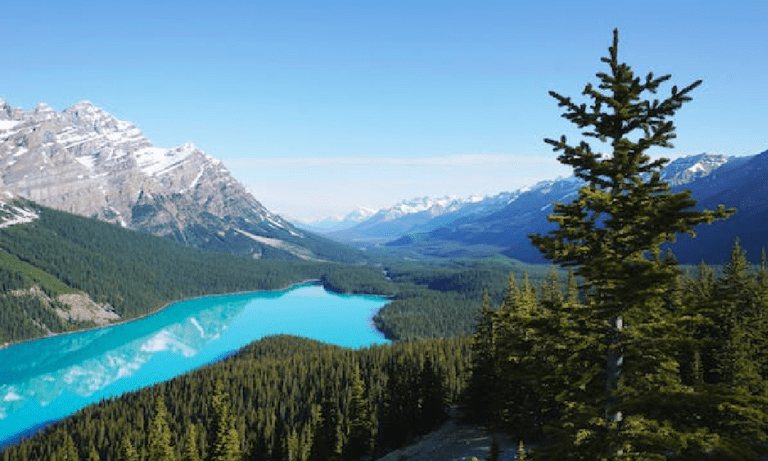
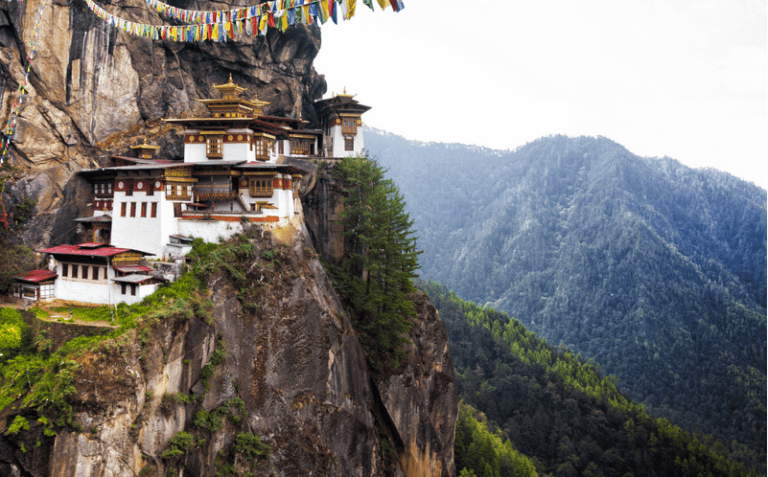




Hey people!!!!!
Good mood and good luck to everyone!!!!!
I just could not depart your web site prior to suggesting that I really loved the usual info an individual supply in your visitors Is gonna be back regularly to check up on new posts